Research Publications
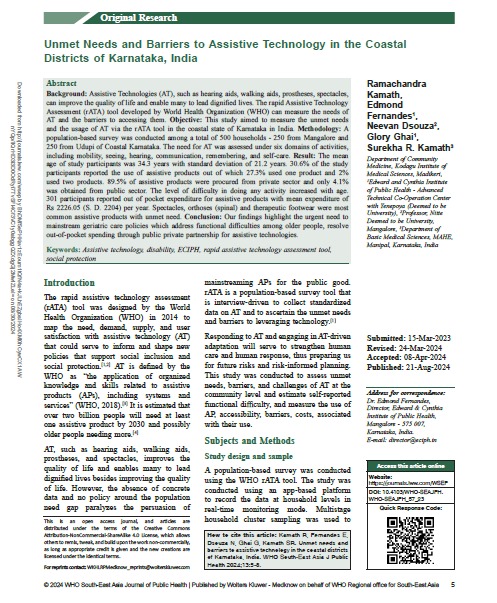
Unmet Needs and Barriers to Assistive Technology in the Coastal Districts of Karnataka, India
The rapid assistive technology assessment (rATA) tool was designed by the World Health Organization (WHO) in 2014 to map the need, demand, supply, and user satisfaction with assistive technology (AT) that could serve to inform and shape new policies that support social inclusion and social protection.[1,2] AT is defined by the WHO as “the application of organized knowledge and skills related to assistive products (APs), including systems and services” (WHO, 2018).[3] It is estimated that over two billion people will need at least one assistive product by 2030 and possibly older people needing more.[4]
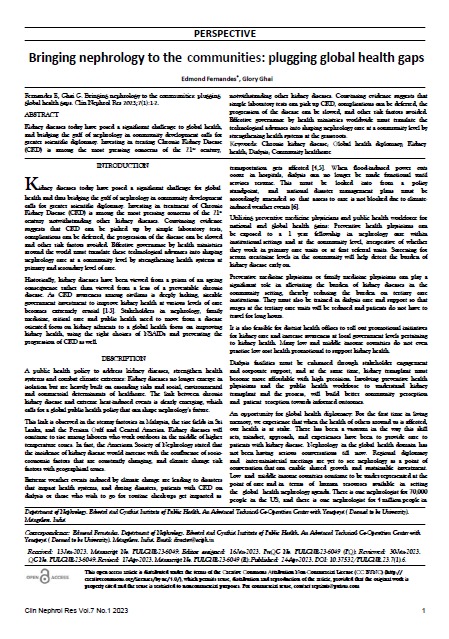
Bringing nephrology to the communities͗ plugging global health gaps
Kidney diseases today have posed a significant challenge for global
health and thus bridging the gulf of nephrology in community development
calls for greater scientific diplomacy. Investing in treatment of Chronic
Kidney Disease (CKD) is among the most pressing concerns of the 21st
century notwithstanding other kidney diseases. Convincing evidence
suggests that CKD can be picked up by simple laboratory tests,
complications can be deferred, the progression of the disease can be slowed
and other risk factors avoided. Effective governance by health ministries
around the world must translate these technological advances into shaping
nephrology care at a community level by strengthening health systems at
primary and secondary level of care.
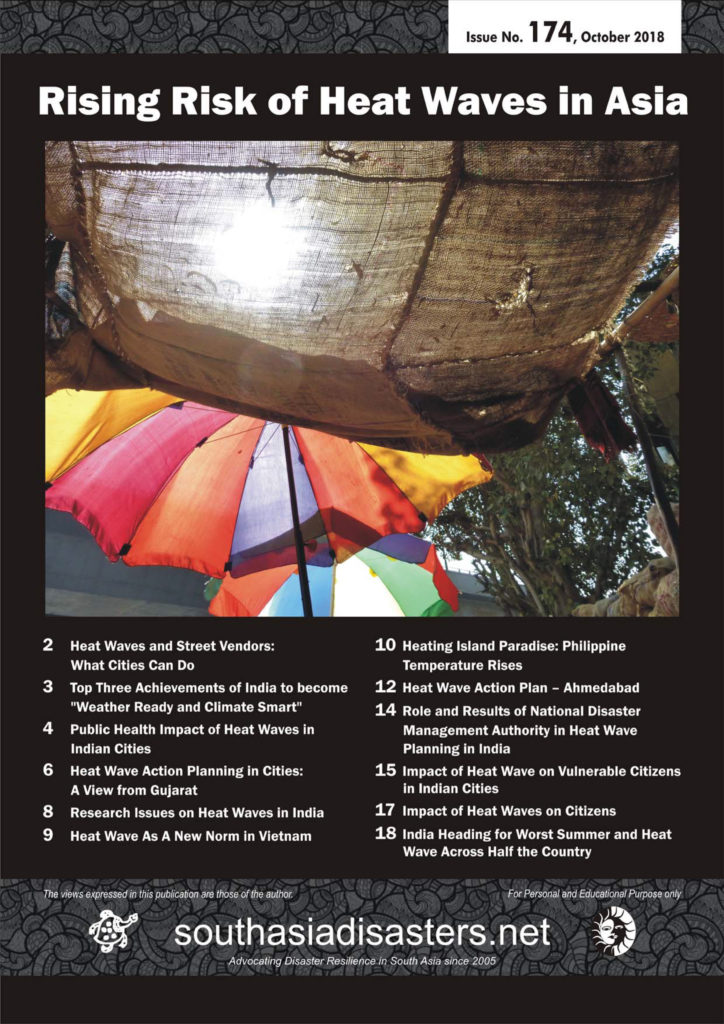
Rising Risk of Heat Waves in Asia
Globally, the effect and burden due to climate change is distributed unequally and often unpredictably. Urban cities, due to their economic and social advancement, face a high risk due to the variability and unpredictability of changing climate.
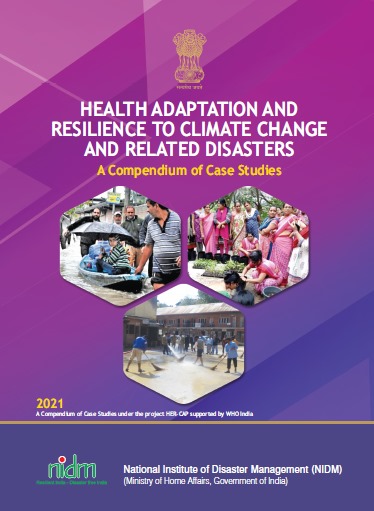
HEALTH ADAPTATION AND RESILIENCE TO CLIMATE CHANGE AND RELATED DISASTERS
The multi-day cloudburst over the Himalayan state of Uttarakhand caused
havoc and huge loss of life, property and infrastructure loss within a short
span of a few days. The rainfall between 16th and 20th of June 2013 was 375%
above normal for the period. Four hilly districts of Uttarkashi, Rudraprayag,
Chamoli and Pithoragarh were completely cut-off for days together.
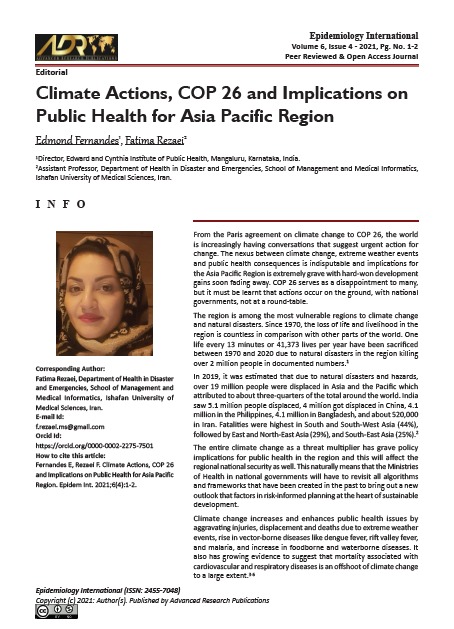
Climate Actions, COP 26 and Implications on Public Health for Asia Pacific Region
From the Paris agreement on climate change to COP 26, the world is increasingly having conversations that suggest urgent action for change. The nexus between climate change, extreme weather events and public health consequences is indisputable and implications for the Asia Pacific Region is extremely grave with hard-won development gains soon fading away. COP 26 serves as a disappointment to many, but it must be learnt that actions occur on the ground, with national governments, not at a round-table.
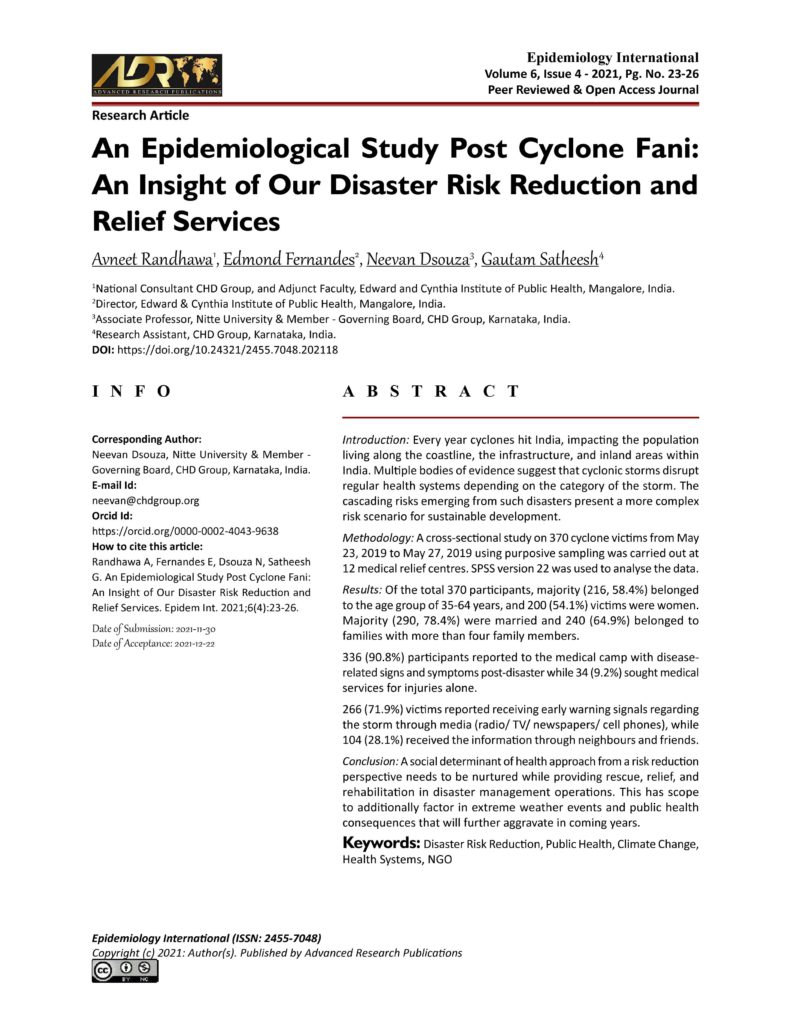
An Epidemiological Study Post Cyclone Fani: An Insight of Our Disaster Risk Reduction and Relief Services
Every year cyclones hit the east and west coasts of India, impacting the population living along the coastline, the infrastructure, and inland areas within India.1 Among the states in India, Odisha stands most vulnerable to natural disasters and impact of climate change, thereby being affected by cyclones, heat waves, floods, and occasional droughts.2,3
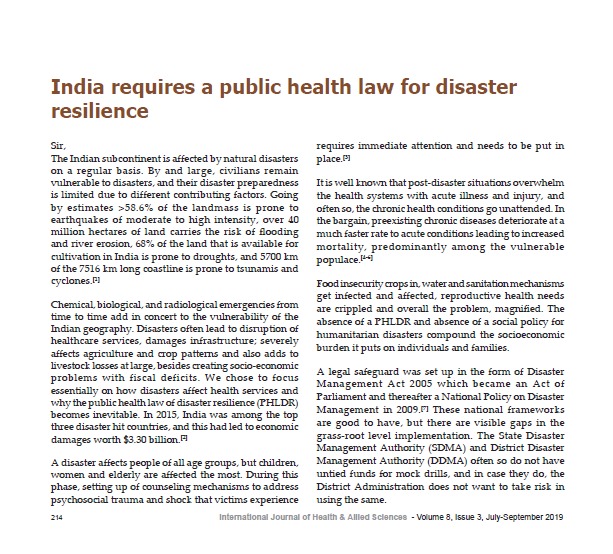
India requires a public health law for disaster resilience
The Indian subcontinent is affected by natural disasters on a regular basis. By and large, civilians remain vulnerable to disasters, and their disaster preparedness is limited due to different contributing factors. Going by estimates >58.6% of the landmass is prone to earthquakes of moderate to high intensity, over 40 million hectares of land carries the risk of flooding and river erosion, 68% of the land that is available for cultivation in India is prone to droughts, and 5700 km of the 7516 km long coastline is prone to tsunamis and cyclones.[1]
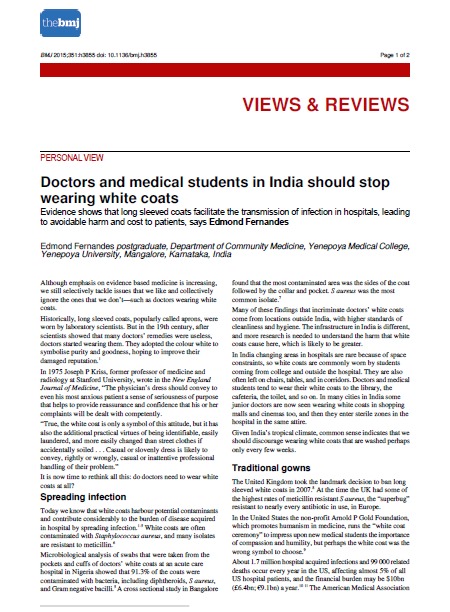
Doctors and medical students in India should stop wearing white coats
Although emphasis on evidence based medicine is increasing, we still selectively tackle issues that we like and collectively ignore the ones that we don’t—such as doctors wearing white coats.
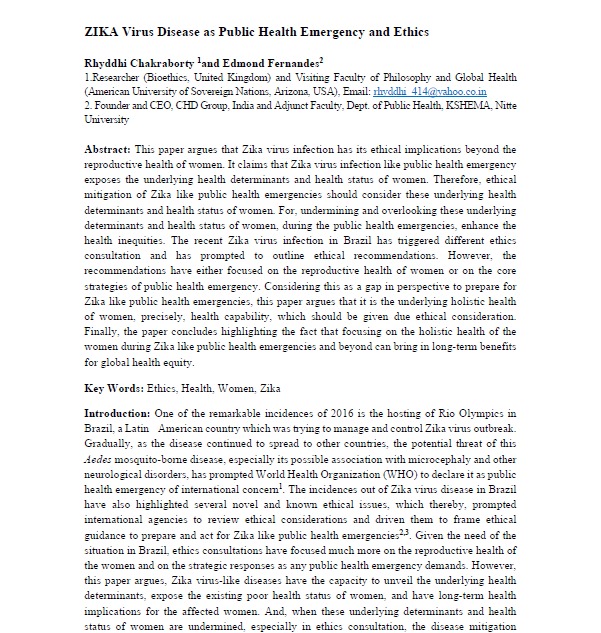
ZIKA Virus Disease as Public Health Emergency and Ethics
One of the remarkable incidences of 2016 is the hosting of Rio Olympics in Brazil, a Latin American country which was trying to manage and control Zika virus outbreak. Gradually, as the disease continued to spread to other countries, the potential threat of this Aedes mosquito-borne disease, especially its possible association with microcephaly and other neurological disorders, has prompted World Health Organization (WHO) to declare it as public health emergency of international concern1. The incidences out of Zika virus disease in Brazil have also highlighted several novel and known ethical issues, which thereby, prompted international agencies to review ethical considerations and driven them to frame ethical guidance to prepare and act for Zika like public health emergencies2,3.
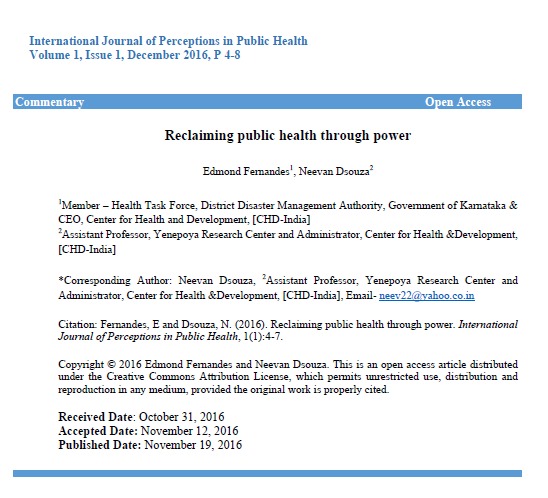
Reclaiming public health through power
Low and middle income nations have for long focused on individuals as determinants of health and much of the decisions to empower individuals without strengthening community participation rested on the shoulders of the political class and bureaucracy which is often noisy, messy, complicated and sometimes lacking domain experts. Public health as a discipline will continue to remain in crisis unless the political class is sensitized and matures.
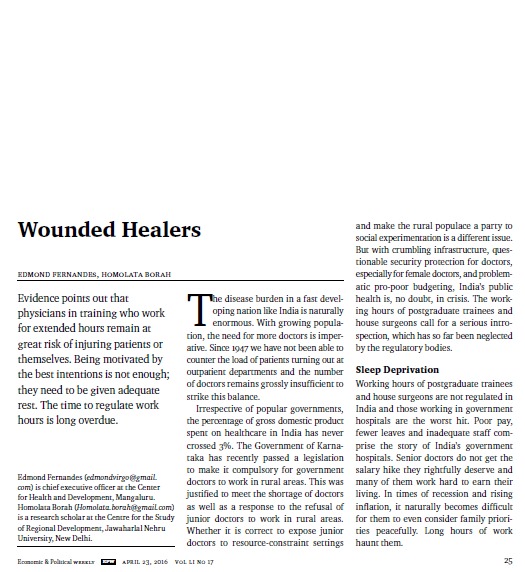
Wounded Healers
The disease burden in a fast developing nation like India is naturally enormous. With growing population, the need for more doctors is imperative. Since 1947 we have not been able to counter the load of patients turning out at outpatient departments and the number of doctors remains grossly insufficient to strike this balance.
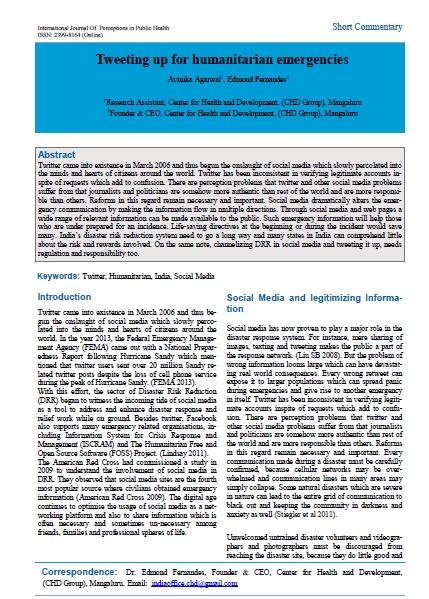
Tweeting up for humanitarian emergencies
Twitter came into existence in March 2006 and thus be-gun the onslaught of social media which slowly perco-lated into the minds and hearts of citizens around the world. In the year 2013, the Federal Emergency Manage-ment Agency (FEMA) came out with a National Prepar-edness Report following Hurricane Sandy which men-tioned that twitter users sent over 20 million Sandy re-lated twitter posts despite the loss of cell phone service during the peak of Hurricane Sandy.
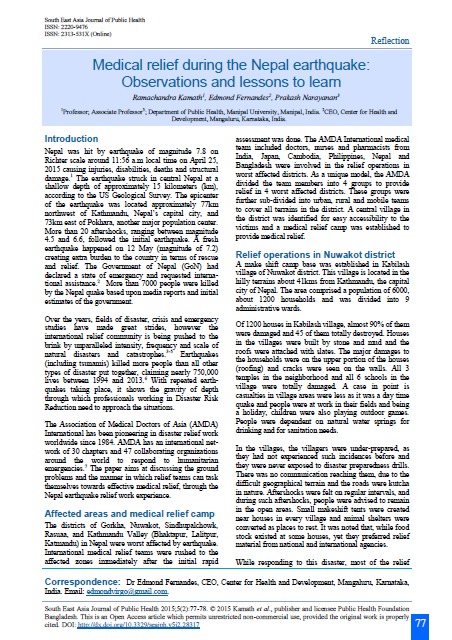
Medical relief during the Nepal earthquake: Observations and lessons to learn
Nepal was hit by earthquake of magnitude 7.8 on Richter scale around 11:56 a.m local time on April 25, 2015 causing injuries, disabilities, deaths and structural damage.1 The earthquake struck in central Nepal at a shallow depth of approximately 15 kilometers (km), according to the US Geological Survey.
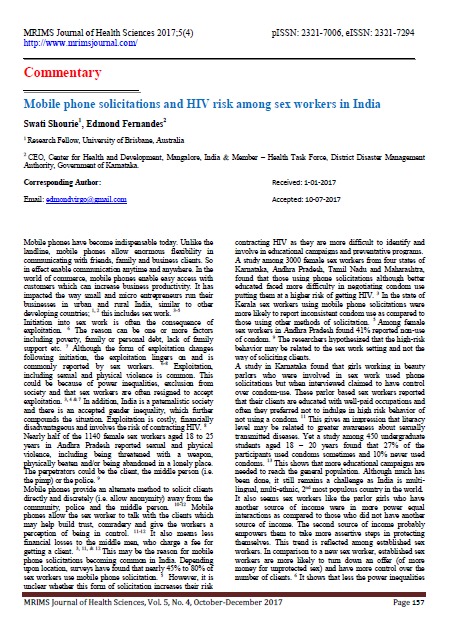
Mobile phone solicitations and HIV risk among sex workers in India
Mobile phones have become indispensable today. Unlike the landline, mobile phones allow enormous flexibility in communicating with friends, family and business clients. So in effect enable communication anytime and anywhere. In the world of commerce, mobile phones enable easy access with customers which can increase business productivity. It has impacted the way small and micro entrepreneurs run their businesses in urban and rural India, similar to other developing countries; 1, 2 this includes sex work.
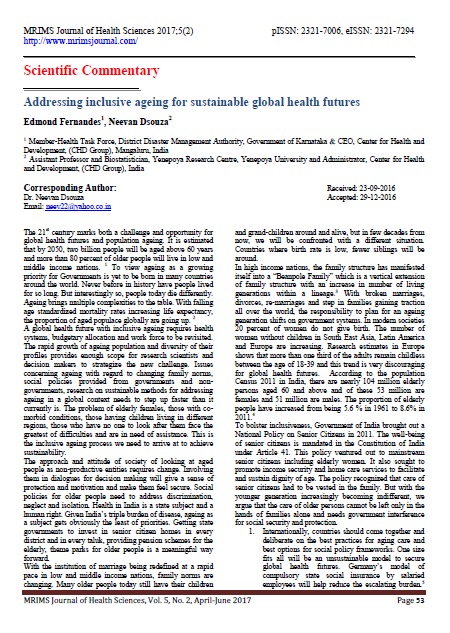
Addressing inclusive ageing for sustainable global health futures
The 21st century marks both a challenge and opportunity for global health futures and population ageing. It is estimated that by 2050, two billion people will be aged above 60 years and more than 80 percent of older people will live in low and middle income nations.
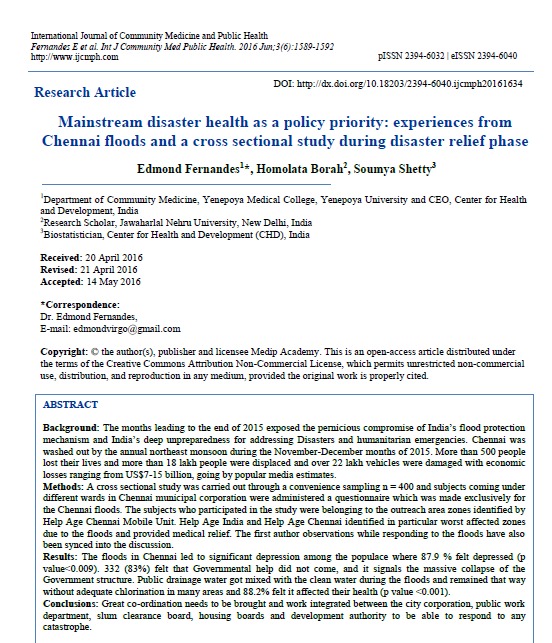
Mainstream disaster health as a policy priority: experiences from Chennai floods and a cross sectional study during disaster relief phase
The months leading to the end of 2015 exposed the pernicious compromise of India’s flood protection mechanism and India’s deep unpreparedness for addressing Disasters and humanitarian emergencies. Chennai was washed out by the annual northeast monsoon during the November-December months of 2015. More than 500 people lost their lives and more than 18 lakh people were displaced and over 22 lakh vehicles were damaged with economic losses ranging from US$7-15 billion, going by popular media estimates.
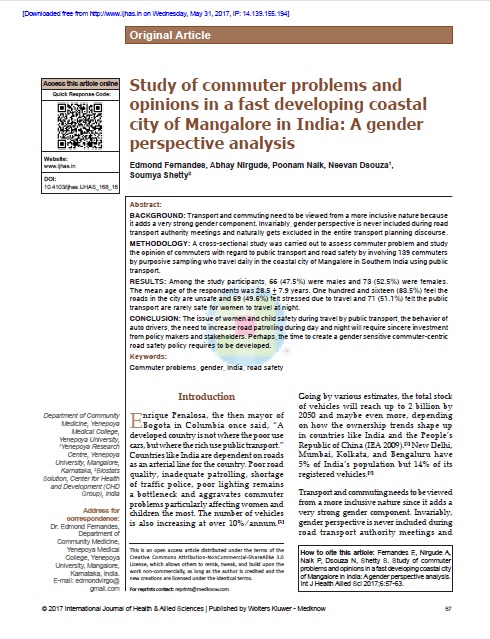
Study of commuter problems and opinions in a fast developing coastal city of Mangalore in India: A gender perspective analysis
Transport and commuting need to be viewed from a more inclusive nature because
it adds a very strong gender component. Invariably, gender perspective is never included during road
transport authority meetings and naturally gets excluded in the entire transport planning discourse.
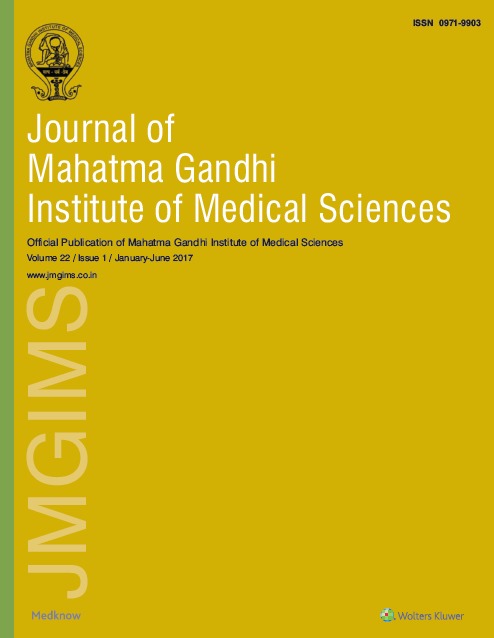
Engage Medical Postgraduates Beyond Medicine
Medical education in India today remains guided by steps taken in British India. We still stress on diagnosing mitral stenosis like rare diseases, when in the neighborhood, we have patients die from malaria, tuberculosis, and cancer which have become a common place of our daily story.